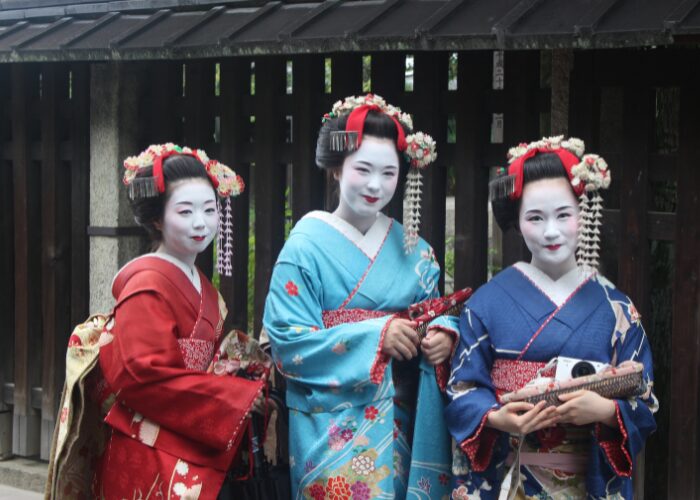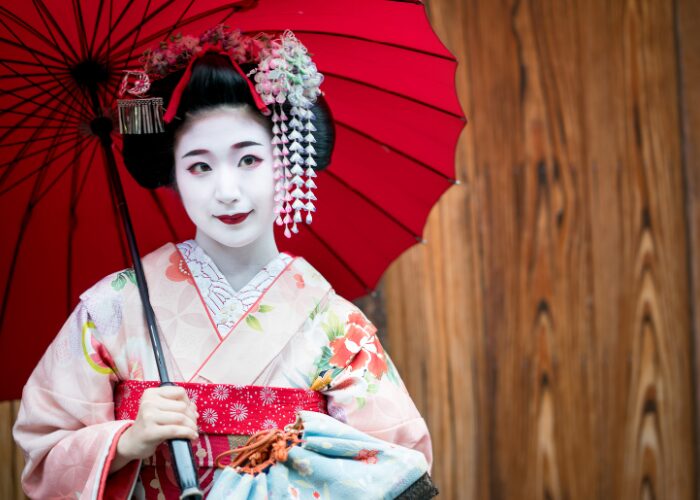
Geishas are iconic symbols in Japanese culture, representing various aspects of art, tradition, and femininity. Here are some key elements that geishas symbolize:
- Traditional Japanese Arts: Geishas are skilled performers of traditional Japanese arts, including classical music, dance, singing, and tea ceremony. They symbolize the preservation and continuation of these ancient cultural practices.
- Elegance and Grace: Geishas epitomize elegance, grace, and refinement. Their meticulous training in social etiquette, poise, and conversation reflects the highest standards of decorum and sophistication.
- Cultural Ambassadors: Geishas serve as cultural ambassadors, representing Japan’s rich heritage to both domestic and international audiences. Their performances and appearances at cultural events showcase Japan’s traditional arts and customs.

- Femininity and Beauty: The elaborate appearance of a geisha, with her distinctive makeup, elaborate hairstyle, and exquisite kimono, symbolizes idealized feminine beauty in traditional Japanese culture.
- Discipline and Dedication: Becoming a geisha requires years of rigorous training and dedication. This discipline and commitment to mastering their craft symbolize the value placed on hard work and perseverance in Japanese society.
- Mystique and Enigma: Geishas often carry an air of mystery due to their private and exclusive world. This mystique adds to their allure and symbolizes the enigmatic charm of traditional Japanese culture.
- Historical Continuity: Geishas have been a part of Japanese culture for centuries, and their continued presence symbolizes the endurance and resilience of traditional practices in the face of modernization and change.
In summary, geishas are multifaceted symbols embodying the essence of traditional Japanese arts, elegance, cultural heritage, and disciplined dedication, all while maintaining an aura of mystique and timeless beauty.
Leave a Reply